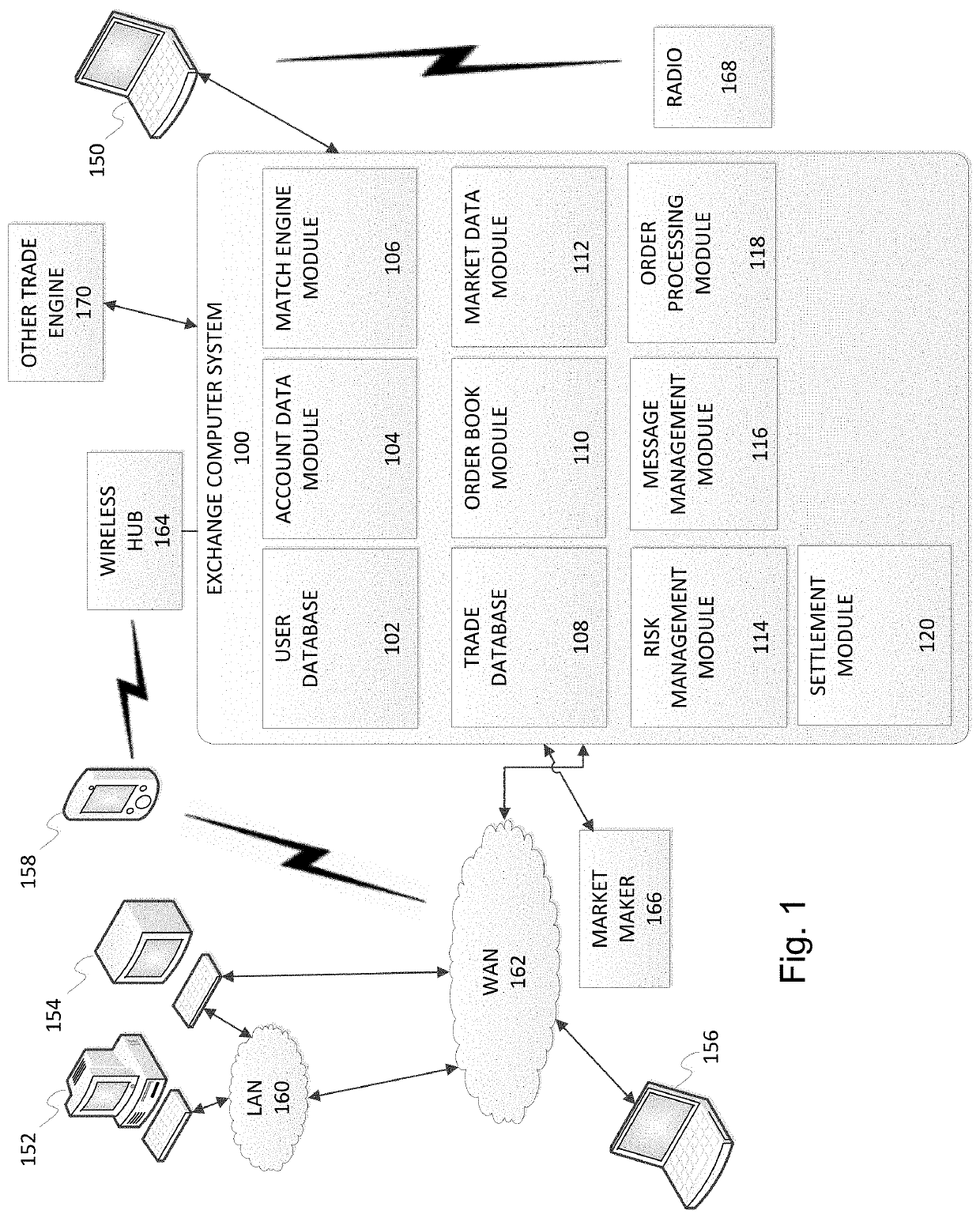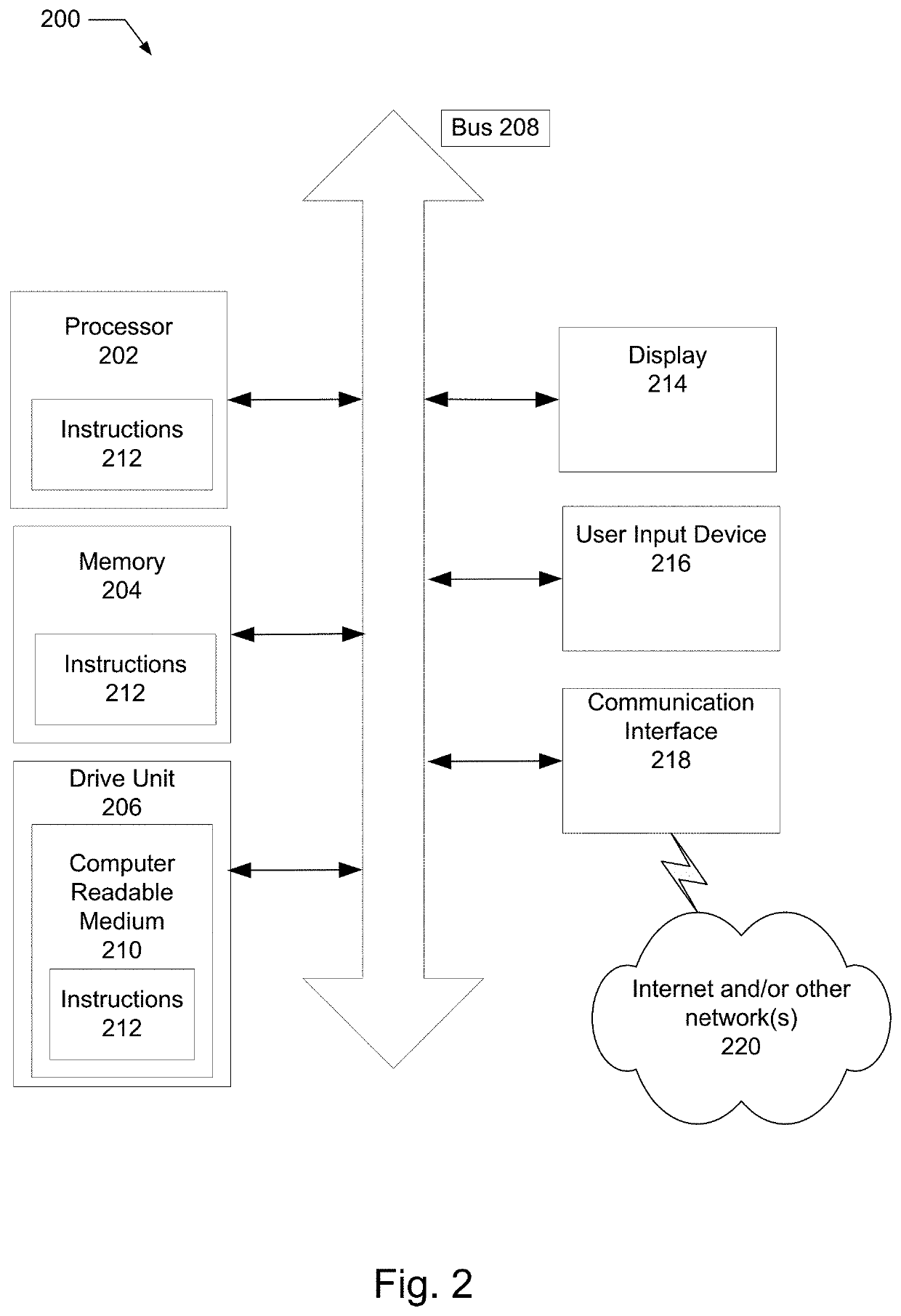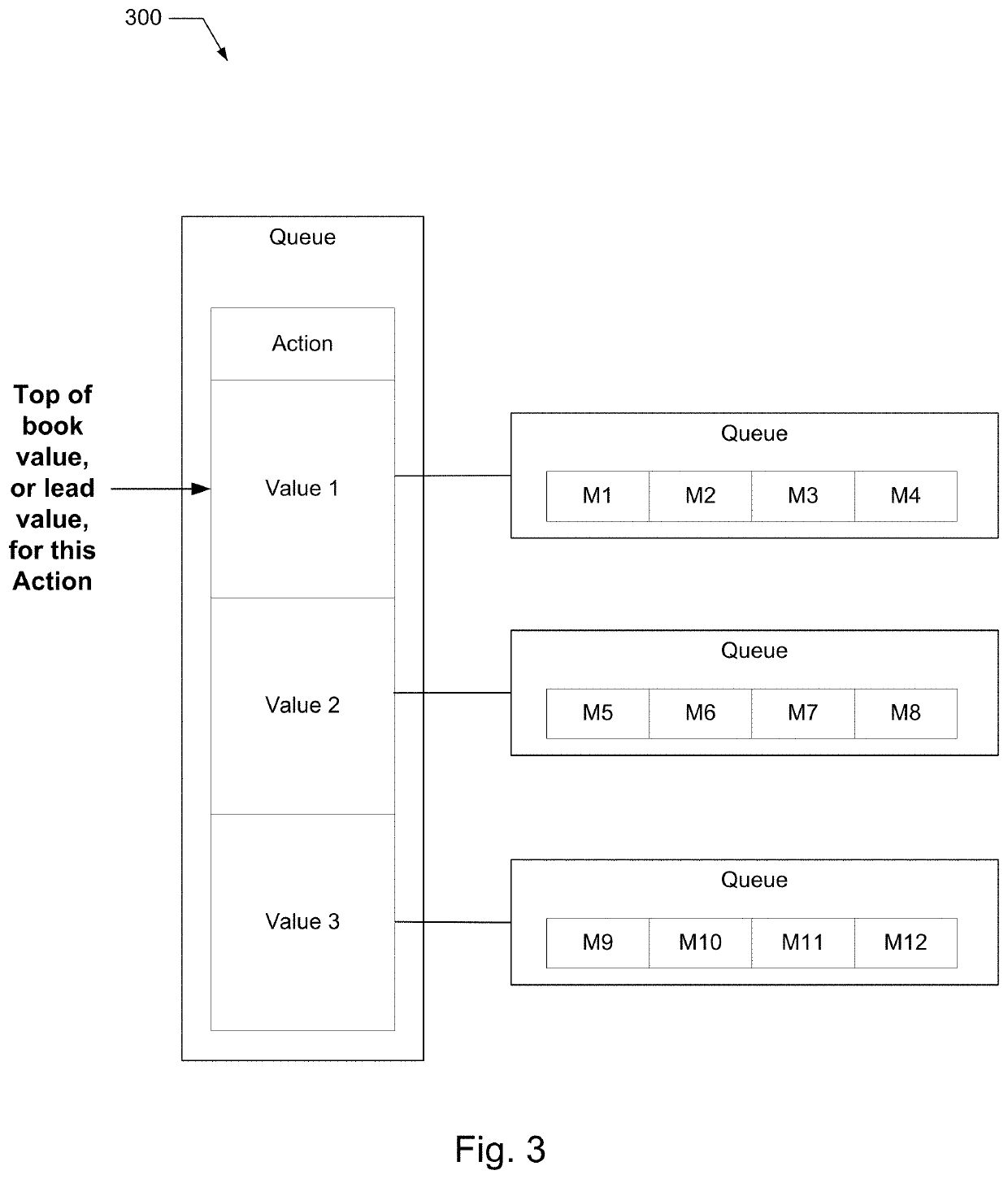Any latency improvement to a stage may come at a cost, namely, the amount of time and computing resources required to cause such latency improvement.
The amount of
performance improvement achieved, and the efforts / costs for achieving such improvement, is a tradeoff.
Any time a message waits in a
queue could be considered unnecessary and the reason for a
bottleneck.
A stage that requires the most processing time may be considered a
bottleneck.
Because the complex application includes multiple different stages and because the application receives messages at a varying / dynamic rate, identifying bottlenecks (however a
bottleneck may be defined for that application) becomes difficult.
In many cases, even if a bottleneck is identified, improving the performance of a stage identified to be a bottleneck may not cause an appreciable improvement on the overall application performance time.
In such cases, the time, money, and computing resources spent to reduce the message processing latency of the bottleneck stage could be considered wasted.
However, latency predication systems for a multiple sequential stage application where the latency of each stage can vary, and where the inter-arrival rate into the application, as well as into each of the stages, can vary, can be difficult for a user to use because each of the variables (e.g., latency for each stage, inter-arrival rate into the application) needs to be specified by the user.
And, the effects of a simulated
system state can also be difficult for the user to understand or effectively use for application optimization because simply indicating to the user the estimated latency of a new simulated state does not impart any information about comparing the benefits of one simulated state versus another simulated state.
For example, optimizing for multiple variables is complex and makes finding the overall optimal solution difficult.
Textual inputs defining the state of the
system (which can then be input into a latency
prediction system) do not clearly or easily convey the interaction and relationships between stages in a multiple sequential stage application and cannot clearly show which stages act as bottlenecks.
Additionally, the number of fields requiring manual
data entry would make the interface complex and prone to
user error.
Combining the stage latencies results in an overall application latency.
In addition, it may be appreciated that
electronic trading systems further impose additional expectations and demands by market participants as to
transaction processing speed, latency, capacity, and
response time, while creating additional complexities relating thereto.
In those markets, the failure of one participant can have a
ripple effect on the solvency of the other participants.
Conversely, CME's mark-to-the-market
system does not allow losses to accumulate over time or allow a
market participant the opportunity to defer losses associated with market positions.
As an intermediary to
electronic trading transactions, the exchange bears a certain amount of risk in each transaction that takes place.
This may result in penalizing the trader who makes an errant trade, or whose underlying trading motivations have changed, and who cannot otherwise modify or cancel their order faster than other traders can submit trades there against.
Furthermore, while it may be beneficial to give priority to a trader who is first to place an order at a given price because that trader is, in effect, taking a risk, the longer that the trader's order rests, the less beneficial it may be.
However, a trader who took a risk by being first to place an order (a “market turning” order) at a price may end up having to share an incoming order with a much later submitted order.
This results in an escalation of quantities on the order book and exposes a trader to a risk that someone may trade against one of these orders and subject the trader to a larger trade than they intended.
In the typical case, once an incoming order is allocated against these large resting orders, the traders subsequently cancel the remaining resting quantity which may frustrate other traders.
If any one of the queues or components of the
transaction processing system experiences a
delay, that creates a backlog for the structures preceding the delayed structure.
For example, if the match or transaction component is undergoing a high processing volume, and if the pre-match or pre-transaction
queue is full of messages waiting to enter the match or transaction component, the conversion component may not be able to add any more messages to the pre-match or pre-transaction
queue.
Most message processing latencies cluster around an average message processing latency, but some messages are outliers and may require much less or much more time than usual.
The simulated application latency may vary as the number of simulated messages increases, because as more messages are processed, the likelihood that queues build up increases.
If the latency
prediction system only simulates one message going through / being processed by all of the stages, the latency
prediction system will not predict the buildup of a queue.
But, if the latency prediction system simulates 100 messages going through the application, some of the later messages may need to wait in a queue, which would result in a longer application
response time.
Text inputs into and outputs out of a latency prediction system would not convey the relationships between the different stages and would be cumbersome to use.
Even if all of the other stages are optimized, in some applications, a stage 1 bottleneck may cause a large
delay that can only be fixed by addressing the message processing latency of stage 1.
The amount of resources allocated to an application stage affects that stage's message processing latency.
Additionally, the illustrations are merely representational and may not be drawn to scale.
 Login to View More
Login to View More  Login to View More
Login to View More 


